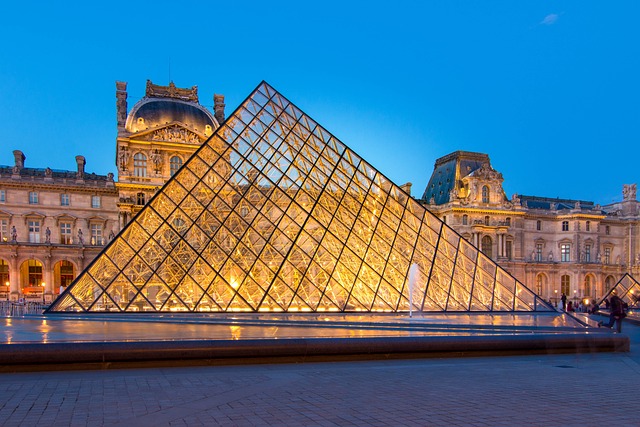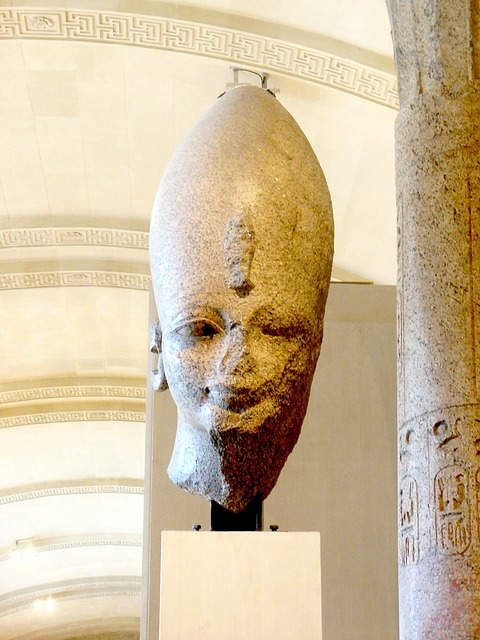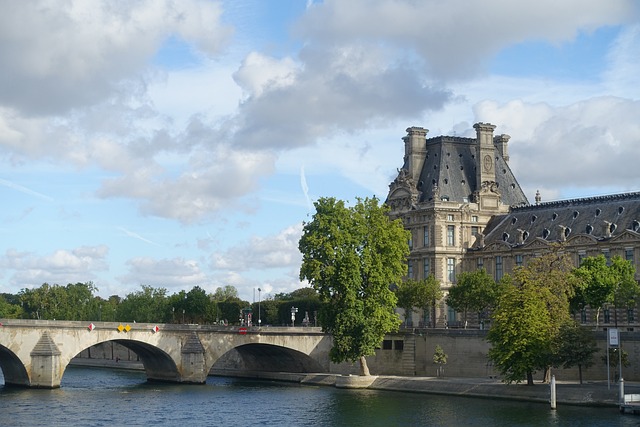The Secrets Hidden Within the Louvre’s Walls
The Louvre Museum, one of the most iconic and visited museums in the world, is not just a treasure trove of art and history but also a labyrinth of secrets waiting to be unveiled. Located in the heart of Paris, the Louvre is home to over 380,000 objects, including some of the most famous artworks such as the Mona Lisa and the Venus de Milo. However, beyond the surface of its renowned masterpieces lies a rich tapestry of stories, mysteries, and historical phenomena that shape its essence. This article aims to explore those hidden secrets that dwell within the Louvre’s walls.
A Brief History of the Louvre
Originally built as a fortress in the late 12th century under King Philip II, the Louvre evolved from its military roots to become a royal palace in the 16th century, before eventually being transformed into a museum during the French Revolution in 1793. Throughout its history, the Louvre has witnessed numerous events and transformations, and each phase contributes to the secrets it now harbors.
The Architecture: A Testament to Time
The architecture of the Louvre itself is a story worth telling. The massive glass pyramid, designed by architect I.M. Pei and inaugurated in 1989, is often seen as a symbol of modernity contrasting with the classical architecture of the museum’s original structure. Yet, the secrets are not only in the contrast but also in the very foundations of the building.
Underneath the Louvre lies a hidden network of medieval structures, dating back to its days as a fortress. Visitors rarely venture into this subterranean world, but it offers an insight into the life of Paris in the Middle Ages. The remnants of the original moat, the vestiges of walls, and ancient passageways provide a window into a bygone era, revealing layers of history that have been quietly preserved.
The Art: More Than Meets the Eye
The Louvre’s impressive collection spans thousands of years and myriad cultures, yet many artworks contain hidden messages and symbolism that often go unnoticed by the casual observer. Art lovers and historians alike have studied these hidden meanings, revealing secrets that enrich the experience of viewing these masterpieces.
Take, for example, the dazzling works of the Italian Renaissance. Leonardo da Vinci’s Mona Lisa, with her enigmatic smile, has captivated millions. However, hidden within the layers of paint lies an intricate understanding of light and shadow, a technique known as sfumato. Scholars argue that this method does not simply enhance the beauty of the painting, but also conveys deeper psychological insights into the character and emotion of the subject, suggesting that her mysterious expression may contain the secrets of her identity and the artist’s intentions.
The Gallery of the Crown Jewels
Among the lesser-known treasures of the Louvre is the Gallery of the Crown Jewels, located within the museum’s rich decorative arts section. This gallery features an impressive collection of jewelry once belonging to French royalty, including the regal diamonds worn by the kings and queens of France. However, the gallery hides secrets of opulence and despair.
Each piece tells a tale of love, loss, intrigue, and betrayal. The stunning Napoleonic crown is not just a symbol of power but a reminder of the dramatic rise and fall of an emperor. As the stories unfold, the stunning craftsmanship of these jewels reveals the luxurious lifestyle of the French elite, yet also the tumultuous history that often accompanied such wealth, including wars and revolutions that led to the downfall of many noble houses.
The Secret Passageways
For centuries, the Louvre has served as a secretive backdrop for many historical events, including plots and intrigues that shaped France. Hidden passageways within the museum added to the mystique; for instance, there are rumors of secret tunnels connecting the Louvre to the Tuileries Palace and the Palais Royal. In the 19th century, during the reign of Louis-Philippe, these tunnels served practical purposes; however, the allure of secretive movements and clandestine meetings continues to captivate the imagination of historians and adventure seekers alike.
The secret passages also offer tales of fugitive art objects. During the occupation of Paris in World War II, many pieces of art were hidden to protect them from Nazi looting. Some argue that treasures still remain concealed within the museum’s walls, waiting for the opportune moment to be revealed or returned to their rightful places.
The Ghosts of the Louvre
Every historical site holds its own set of ghost stories, and the Louvre is no exception. As some visitors report uncanny sensations and feelings of being watched, the museum’s long history may indeed harbor spirits of the past. Many believe that the essence of artists, kings, and queens lingers, infusing the air with an enigmatic presence.
One particularly well-known spirit is that of King Francis I, a Renaissance monarch who was instrumental in transforming the Louvre into a royal residence and a cultural hub. His alleged apparition has reportedly been spotted roaming the corridors, overseeing the magnificent collection that bears his legacy. Many visitors leave with the feeling that they are not merely surrounded by art but also by the echoes of history itself.
The Royal Portraits: More Than Just Faces
Amongst the thousands of paintings in the Louvre, the collection of royal portraits provides a fascinating insight into French history. However, many of these portraits hold secrets beyond mere artistic brilliance. The portrayed figures often come from turbulent backgrounds, with their lives marked by scandal and intrigue.
For example, the portrait of Marie Antoinette conveys not just her royal status but also the political strife of her era. The use of extravagant fabrics, elaborate hairstyles, and opulent jewelry in her likeness reflects the grandeur of her position, yet also symbolizes the disconnect between the monarchy and the increasingly restless populace that would eventually rise against her.
The Mona Lisa’s Enigma
An entire generation has been captivated by the Mona Lisa, her smile invoking fascination and curiosity. Behind her smile lies a story marred with speculation and mystery. Various hypotheses about her identity abound, with theories ranging from Lisa Gherardini, a Florentine merchant’s wife, to the idea that she might represent an allegorical figure of femininity.
Moreover, the painting’s theft in 1911 by an Italian handyman named Vincenzo Peruggia added another layer of intrigue. Peruggia believed the painting belonged in Italy, reflecting the national pride that is intertwined with the artwork. The stigma surrounding this event has only served to heighten the allure of the portrait, as it became a symbol of the critical and emotional relationship between art, identity, and ownership during turbulent times.
Restorations and Preservation: An Ongoing Journey
The Louvre is perpetually involved in restoration projects of its artworks and artifacts, revealing the enduring secrets that lie within their composition. Through advanced techniques, art conservationists have uncovered previously obscured details and elements that tell more profound stories. This ongoing preservation effort reflects the museum’s commitment to safeguarding its treasure trove for generations to come.
Such restoration revelations can surface long-forgotten images, symbols hidden in the layers of paint, or original colors that have faded over time. Each brushstroke carries history, and as these secrets emerge, they reshape the narratives surrounding these iconic pieces.
Visitor Experiences: Uncovering Secrets in the Present
The Louvre is not only a sanctuary for art but also a vibrant hub of artistic interaction. When visitors explore the museum’s vast halls, they engage with the art and stories, often uncovering secrets of their own in the process. Guided tours provide deeper insight into specific pieces of art, while interactive programs encourage guests to delve into the history behind the treasures.
Some programs also engage visitors in the stories of their ancestors, connecting art to familial history and personal narratives. For many, this connection leads to a profound understanding of art as a reflection of culture, history, and human experience.
The Louvre in Contemporary Culture
The Louvre’s influence extends beyond its walls; it has permeated contemporary culture, reflected in films, literature, music, and even pop art. Numerous films have used the museum’s hallways as a backdrop for scenes steeped in mystery and tension, further encapsulating its enigmatic aura.
40,000 visitors daily are immersed in the stories told by art, but only a few come to grasp the layers of meaning that stretch far beyond aesthetics. From Dan Brown’s “The Da Vinci Code” to various documentaries, the Louvre has become a symbol of secret knowledge, intrigue, and adventure, igniting imaginations worldwide.
The Never-Ending Quest for Knowledge
Unfolding the secrets hidden within the Louvre’s walls requires an exploration of not only art but also the context surrounding its creation and preservation. The Louvre is more than a museum; it is a living monument to human creativity and the relentless quest for understanding. Each visit promises new discoveries, encouraging art lovers, historians, and casual visitors to embark on a never-ending journey through time and existence.
Conclusion
The Louvre is a tapestry of stories interwoven into the very fabric of Paris’s cultural heritage. Its walls hold witness to the whims of historical figures, the quiet soul of an artist, and the stories of everyday people whose lives have been impacted by the art housed within. This celebration of creation, loss, intrigue, and identity brings depth to every visit.
In the hidden corridors of its vast galleries and in the quiet contemplation of its artworks, the secrets of the Louvre await to be discovered. Each painting, sculpture, or artifact breathes life into the past while reminding us of our own narratives—ever evolving, ever intertwined with the secrets hidden within the walls of the world’s most famous museum.


